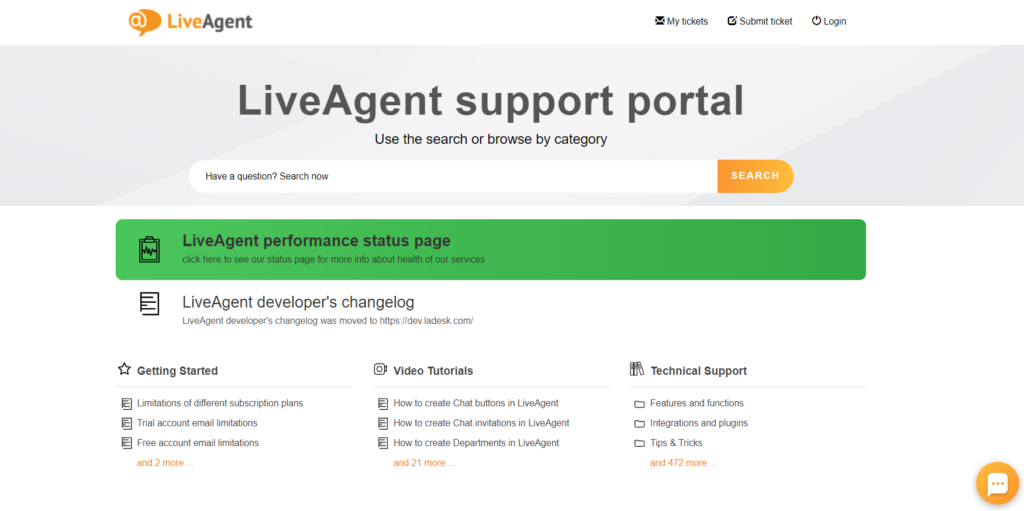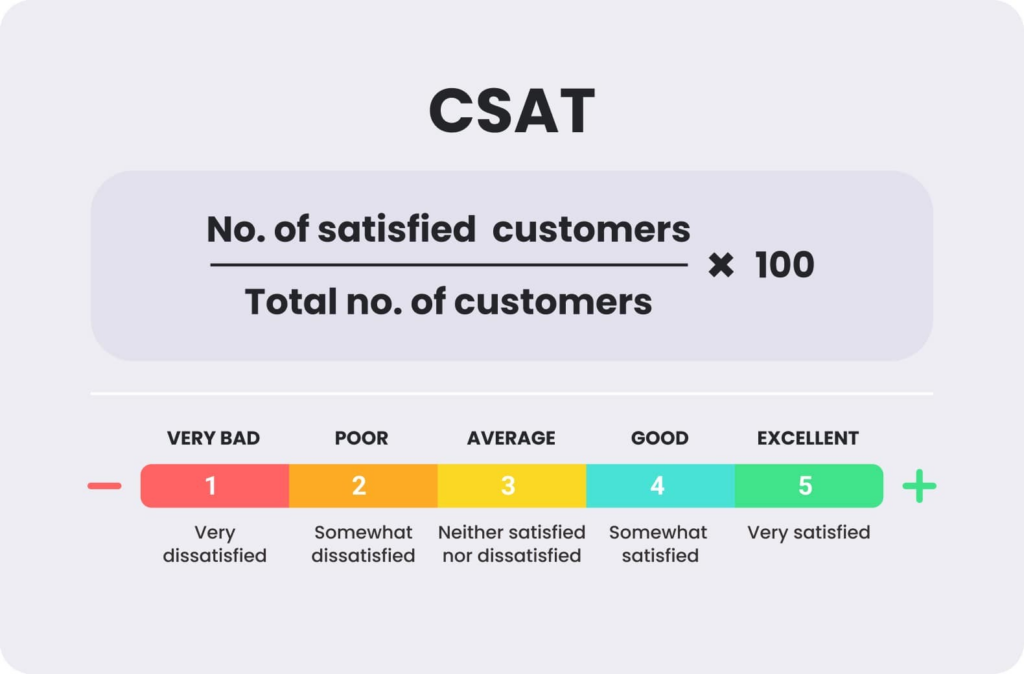In the fast-paced world of business, mastering customer communication is no longer just an option—it’s a necessity. Effective communication not only helps you understand your customers’ needs but also builds lasting relationships that drive success.
This guide will provide you with actionable strategies and best practices for enhancing your customer communication, all while demonstrating how LiveAgent’s powerful software can help you achieve these goals seamlessly.
Whether you’re looking to improve customer satisfaction, boost brand loyalty, or simply streamline your communication channels, this guide has you covered.
Key takeaways
- Good customer communication builds trust and keeps customers coming back. It’s not just about answering questions—it’s about making customers feel valued.
- Each communication channel has its strengths and weaknesses—find the ones that work best for your customers.
- Crafting a clear brand voice is key. Keep it consistent across all your platforms so customers always know it’s you.
- Quick replies are crucial—customers love it when you’re fast, even if it’s just to say you’re working on their issue.
- Tracking key performance indicators (KPIs) like response time and customer satisfaction helps you see where your communication is shining and where it needs work.
- LiveAgent makes it easy by bringing all your communication channels together in one place, automating responses, and providing 24/7 support.
Why customer communication drives success
Customer communication is the backbone of any successful business. It’s not just about exchanging information—it’s about building trust, solving problems, and creating a positive experience that keeps customers coming back.
Effective customer communication enhances satisfaction, builds brand loyalty, and ultimately drives revenue growth. According to a study, 73% of consumers say that customer experience is an important factor in their purchasing decisions, and communication is at the heart of that experience.
A company’s ability to communicate well can make or break its reputation. Positive communication experiences lead to word-of-mouth referrals and repeat business, while poor communication can damage a brand’s image and drive customers to competitors. Data reveals that 93% of customers are likely to make repeat purchases with companies that offer excellent customer service.
Clearly, mastering customer communication is not just a good practice—it’s a business imperative.
| Channel | Pros | Cons |
|---|---|---|
| Professional, detailed, records of communication | Slower response times, can feel impersonal | |
| Phone | Immediate, personal, allows for detailed conversations | Time-consuming, can be costly |
| Live Chat | Real-time support, convenient for customers | Requires staffing, limited to text-based communication |
| Social Media | Public engagement, brand building | Public visibility of complaints, potential for delayed responses |
| In-App Messaging | Seamless customer experience within the app | Limited to users within the app, can be intrusive if overused |
If you’re looking for seamless communication regardless of the channel your customers prefer, LiveAgent integrates all these channels into a single platform. This integration not only streamlines your processes but also ensures that no customer interaction slips through the cracks.
Developing a customer communication strategy
Creating an effective customer communication strategy requires careful planning and a clear understanding of your brand’s voice, goals, and audience. Here are some things to consider before getting started. Also, understanding what is a inbox is essential for managing customer interactions effectively across multiple channels.
Crafting your brand voice
Your brand voice is the personality and tone that you convey in your communications. Whether it’s formal, friendly, or quirky, your brand voice should be consistent across all channels to build trust and recognition.
A well-defined and consistent brand voice creates a unified customer experience, helping to foster deeper connections with your audience while reinforcing your company’s identity across different touchpoints.
Questions to ask yourself while crafting your brand voice:
How does your brand voice reflect your company’s values and culture, and is it resonating with your target audience across all communication channels?
Setting communication goals
Define clear, measurable goals for your customer communication efforts. Whether you aim to reduce response times, increase customer satisfaction scores, or boost engagement on social media, setting goals will help you stay focused and track your progress.
Regularly reviewing these goals allows you to adjust your strategy and continuously improve your communication efforts, ensuring that you adapt to changing customer expectations and business needs. Understanding what is a video chat is essential for improving customer interactions by enabling face-to-face communication remotely.
Questions to ask yourself while setting up your communication goals:
Are your communication goals aligned with your overall business objectives, and how often do you evaluate them to ensure they’re meeting customer expectations?
Choosing the right channels
Not every communication channel is right for every business.
Consider where your customers are most active and how they prefer to interact with your brand. LiveAgent’s multi-channel integration can help you manage all your communications from one place, ensuring consistency and efficiency.
Selecting the appropriate channels not only increases customer reach but also improves the quality of interactions, making it easier to provide personalized and timely support.
Questions to ask yourself while choosing communication channels:
Are you engaging with customers on the channels they prefer, and how well are these channels helping you provide timely, personalized support?
Crafting clear and concise messages
Clear communication is key to avoiding misunderstandings and ensuring that your customers get the help they need. Use simple language, avoid jargon, and be direct. LiveAgent offers templates and canned responses that can help maintain clarity and consistency, saving time while making sure your messages are on point.
Crafting clear messages enhances customer understanding, improves satisfaction, and minimizes follow-up inquiries, leading to faster resolution of issues and more positive customer experiences.
Questions to ask yourself while crafting messages:
Are your messages easy to understand, free of jargon, and clear in purpose, or could simplifying your language improve customer satisfaction and reduce misunderstandings?
Best practices for customer communication
Great customer communication isn’t just about getting the job done—it’s about making your customers feel heard, valued, and understood.
To build lasting relationships and keep customers coming back, it’s important to move beyond the basics. Here are some practical, real-world best practices that can help you create meaningful and impactful interactions with your customers.
Be real
Sounds easy, but it actually takes some effort to find that fine balance between consistency and authenticity. Using canned responses may add to the consistency of your tone, but on the flip side, it makes the customer feel better knowing that there’s another human on the other end.
Customers appreciate when support agents inject a personal touch into their conversations, acknowledging their specific issue rather than giving a generic, templated response. By making your communication authentic and conversational, you build trust and a more meaningful connection with your customers.
Question to think about:
How can you ensure that your customer communication remains authentic and personal, while still maintaining consistency across your brand’s communication?
Personalization
Tailor your communication to each customer’s needs, preferences, and previous interactions.
Personalization goes beyond using a customer’s name—it involves understanding their history with your company and offering relevant solutions. Whether through personalized email campaigns, customized product recommendations, or addressing specific inquiries, showing customers that you value them as individuals deepens trust and loyalty.
Questions to think about:
How well do you know your customers’ individual preferences?
Are you leveraging this knowledge to offer personalized experiences at every touchpoint?
Prompt responses
In today’s fast-paced world, customers expect fast responses. Responding quickly, even with a brief acknowledgment, helps customers feel heard and valued.
A fast response time is crucial, especially in customer service where delays can lead to frustration and dissatisfaction. LiveAgent’s automated responses and 24/7 chat support can ensure your customers never feel neglected, no matter the time of day.
Questions to think about:
Are you meeting your customers’ expectations for prompt responses?
How can you further reduce response times without sacrificing quality?
Empathy and positive language
Empathy is essential when dealing with customer concerns or frustrations.
Acknowledge their feelings by saying things like, “I understand how that can be frustrating,” before offering solutions. Coupling empathy with positive language creates a more constructive and calming interaction.
Instead of saying, “I can’t do that,” try, “Here’s what I can do to help.” This approach sets a more positive and warmer customer experience, even when resolving issues.
Question to think about:
How can you make sure that your team consistently uses empathetic and positive language to turn difficult situations into positive customer experiences?
Active listening
Listening goes beyond just hearing the words; it means understanding the emotions and concerns behind them.
Practice active listening by asking clarifying questions, summarizing the customer’s concerns, and providing thoughtful responses. This approach helps to build trust and makes sure that the customer feels fully understood and valued.
Questions to think about:
Are you actively listening to your customers’ concerns?
How can better listening skills enhance the quality of your customer support in your circumstances?
Proactive communication
Instead of waiting for customers to come to you with problems, take a proactive approach.
Whether it’s informing them about a potential issue, providing product updates, or checking in on their satisfaction, proactive communication shows that you’re invested in their experience. It’s a powerful way to prevent issues from escalating and to reinforce your commitment to customer care.
Question to think about:
How can you leverage proactive communication to anticipate your customers’ needs and create opportunities to delight them before issues arise?
Ready to incorporate some of these ideas into your business? LiveAgent’s advanced features, such as automated responses and 24/7 chat support, can help you implement these best practices efficiently, ensuring that your customers always receive top-notch service.
Learning from the best: Customer communication case studies
Great customer communication isn’t just about solving problems—it’s about creating experiences that build trust and loyalty.
Let’s explore how two companies, JetBlue and LiveAgent, have implemented communication strategies that transformed their customer relationships and set them apart from competitors.
JetBlue: Real-time communication and social media responsiveness

Challenge:
As a major airline, JetBlue faced the challenge of addressing customer concerns in real-time, particularly during delays and other disruptions. Customers wanted immediate support and updates, especially via social media platforms like Twitter.
Solution:
JetBlue invested heavily in real-time social media communication, particularly on Twitter, where they monitor mentions and respond to customer issues quickly. Their social media team was empowered to provide real-time updates on flight statuses, resolve issues on the spot, and ensure that every customer inquiry was addressed promptly.
Result:
JetBlue’s Twitter response time is one of the fastest in the airline industry, with an average reply time of under 10 minutes. Their commitment to real-time, personal communication earned them high praise on social media and helped maintain customer loyalty, even during difficult situations like flight delays.
LiveAgent: Building trust through empathy and education

Challenge:
As a customer support software provider, LiveAgent’s support team faces the challenge of assisting customers who often struggle to articulate their issues due to the technical nature of the software or language barriers. The team needed a strategy that could both resolve issues and empower customers to become more self-sufficient, all while maintaining a positive, empathetic tone.
Solution:
LiveAgent adopted a customer communication strategy centered around empathy, patience, and education. Rather than simply solving issues, agents took the time to understand the customer’s problem fully—encouraging them to provide detailed information, screenshots, or recordings.
This approach ensured the team fully grasped the issue, even if the customer was unable to explain it perfectly. The support team also focused on educating customers, guiding them through solutions step-by-step, and offering resources like knowledge bases and tutorials to help customers become more confident using the platform independently.
Agents emphasized creating a calm, polite environment where customers felt comfortable asking questions, no matter their technical skill level. This helped bridge the gap between software experts and novice users, ensuring that even complex issues were handled smoothly and with understanding.
Result:
LiveAgent’s approach resulted in increased customer satisfaction, as customers appreciated the personalized attention and patient guidance they received. This customer-first mindset strengthened trust in LiveAgent, contributing to a higher retention rate and positive feedback from clients who felt supported, educated, and valued throughout the process.
How to measure the effectiveness of your customer communication
Measuring the effectiveness of your communication efforts is crucial for continuous improvement and for ensuring that your customer service strategy aligns with your business goals.
By analyzing key performance indicators (KPIs), you can gain valuable insights into how well your communication efforts are performing and identify areas that need improvement. Without a doubt, these are some of the most important KPIs to track.
Response Time
Response time measures how quickly your team responds to customer inquiries or issues. A shorter response time is crucial for maintaining customer satisfaction, especially in today’s fast-paced environment where customers expect immediate assistance.
Tracking this metric helps you understand how efficiently your team handles requests and how well you’re meeting customer expectations for speed.
Tip: Implement automated responses and prioritize inquiries to ensure customers receive timely acknowledgment and faster resolutions.
Customer Satisfaction (CSAT) Scores
Customer Satisfaction (CSAT) scores reflect how satisfied customers are with your service. After an interaction, customers rate their experience, usually on a scale of 1 to 5. A higher score indicates that your communication is meeting or exceeding expectations.

Regularly measuring CSAT allows you to monitor the quality of your communication and identify patterns in customer satisfaction.
Tip: Regularly request feedback and act on it by improving areas where customers indicate lower satisfaction.
Net Promoter Score (NPS)
Net Promoter Score (NPS) measures customer loyalty by asking customers how likely they are to recommend your company to others. Customers respond on a scale from 0 to 10, and the score categorizes them as detractors, passives, or promoters.
A high NPS suggests that your communication is fostering positive relationships, leading to greater brand loyalty and advocacy.
Tip: Engage with detractors and passives to understand their concerns and turn them into promoters by addressing their issues.
First Contact Resolution (FCR)
First Contact Resolution (FCR) tracks the percentage of customer issues that are resolved during the first interaction. High FCR rates indicate that your team is effectively solving problems without the need for follow-up, which can greatly enhance customer satisfaction and reduce operational costs.
Tip: Equip your team with the right tools and training to resolve issues in the first interaction, and ensure they have access to the necessary information.
Customer Effort Score (CES)
Customer Effort Score (CES) measures how easy it is for customers to get their issues resolved. Customers rate the effort required to interact with your company, usually on a scale from “very easy” to “very difficult.”
A low effort score suggests that your communication processes are smooth and efficient, contributing to overall customer satisfaction.
Tip: Streamline your customer service processes by eliminating unnecessary steps and providing clear instructions to reduce customer effort.
Make yourself familiar with these KPIs. By incorporating these tips and using LiveAgent’s analytics and reporting features, you can continuously improve these KPIs, making sure that your customer communication is effective and customer-centric.
Streamline communication with the technology
There’s no going around it, communication and technology go hand-in-hand.
Technology helps make customer communication better by letting businesses simplify interactions and offer great service. Tools like chatbots, AI, and automation give faster, more efficient support while reducing the workload for your team. By linking helpdesk and CRM systems, your team can access all the info they need to quickly solve issues.
Chatbots can manage simple questions and troubleshooting 24/7, allowing human agents to focus on harder problems. AI improves this by learning from past chats to give smarter replies and predict what customers need. Automation ensures no inquiry is missed by sending automatic replies or reminders, keeping service consistent.
Is there a one-stop solution?
LiveAgent offers strong features like automated replies, so customers get immediate responses. With 24/7 chat support, businesses can give real-time help anytime. LiveAgent’s AI tools also study customer interactions, improving response times and workflows. These tools make communication smoother and boost customer satisfaction by providing fast and personalized support.
Conclusion
Effective customer communication is a key driver of business success.
By mastering the strategies and best practices outlined in this guide—and leveraging the powerful features of LiveAgent—you can build stronger relationships with your customers, improve satisfaction, and ultimately drive growth. With the right technology in place, you can streamline processes, offer personalized support, and ensure that every interaction leaves a positive impact.
Ready to take your customer communication to the next level? Start your 30-day free trial with LiveAgent today and experience the difference for yourself.
Looking to improve your customer service?
Get started with LiveAgent and unify your communication tools in one dedicated help desk solution that can help you solve queries efficiently.
Frequently Asked Questions
What are some common mistakes to avoid in customer communication?
Common mistakes include being unresponsive, using jargon, failing to personalize messages, not actively listening, overpromising and underdelivering, and ignoring customer feedback. These can lead to customer frustration, loss of trust, and missed opportunities for improvement.
How can I use customer communication to drive sales and conversions?
Use customer communication to build trust, provide personalized recommendations, and address concerns promptly. Engaging customers with timely, relevant information and offering proactive support can guide them through the buying journey, increasing the likelihood of sales and conversions.
How can I train my team to improve their customer communication skills?
Training your team in customer communication skills is crucial. Direct them to our specialized academy pages that focus on customer service and soft skills. These pages offer practical guidance on active listening, empathy, clarity, and effective problem-solving, helping your team excel in customer interactions.
What are the best ways to handle angry or dissatisfied customers?
To handle angry or dissatisfied customers, listen actively, acknowledge their feelings, and respond with empathy. Apologize sincerely, offer solutions, and follow up to ensure satisfaction. Keeping calm and professional while addressing their concerns can turn a negative experience into a positive one.
Discover how LiveAgent's extensive integrations, plugins, and apps can enhance your help desk software and boost customer satisfaction. Explore popular integrations with VoIP partners like Hero, Orion, and Redspot, plus CRM, eCommerce, and more. Visit us to streamline your communication and elevate your business with easy integration guides.

 Български
Български  Čeština
Čeština  Dansk
Dansk  Deutsch
Deutsch  Eesti
Eesti  Español
Español  Français
Français  Ελληνικα
Ελληνικα  Hrvatski
Hrvatski  Italiano
Italiano  Latviešu
Latviešu  Lietuviškai
Lietuviškai  Magyar
Magyar  Nederlands
Nederlands  Norsk bokmål
Norsk bokmål  Polski
Polski  Română
Română  Русский
Русский  Slovenčina
Slovenčina  Slovenščina
Slovenščina  简体中文
简体中文  Tagalog
Tagalog  Tiếng Việt
Tiếng Việt  العربية
العربية  Português
Português 







